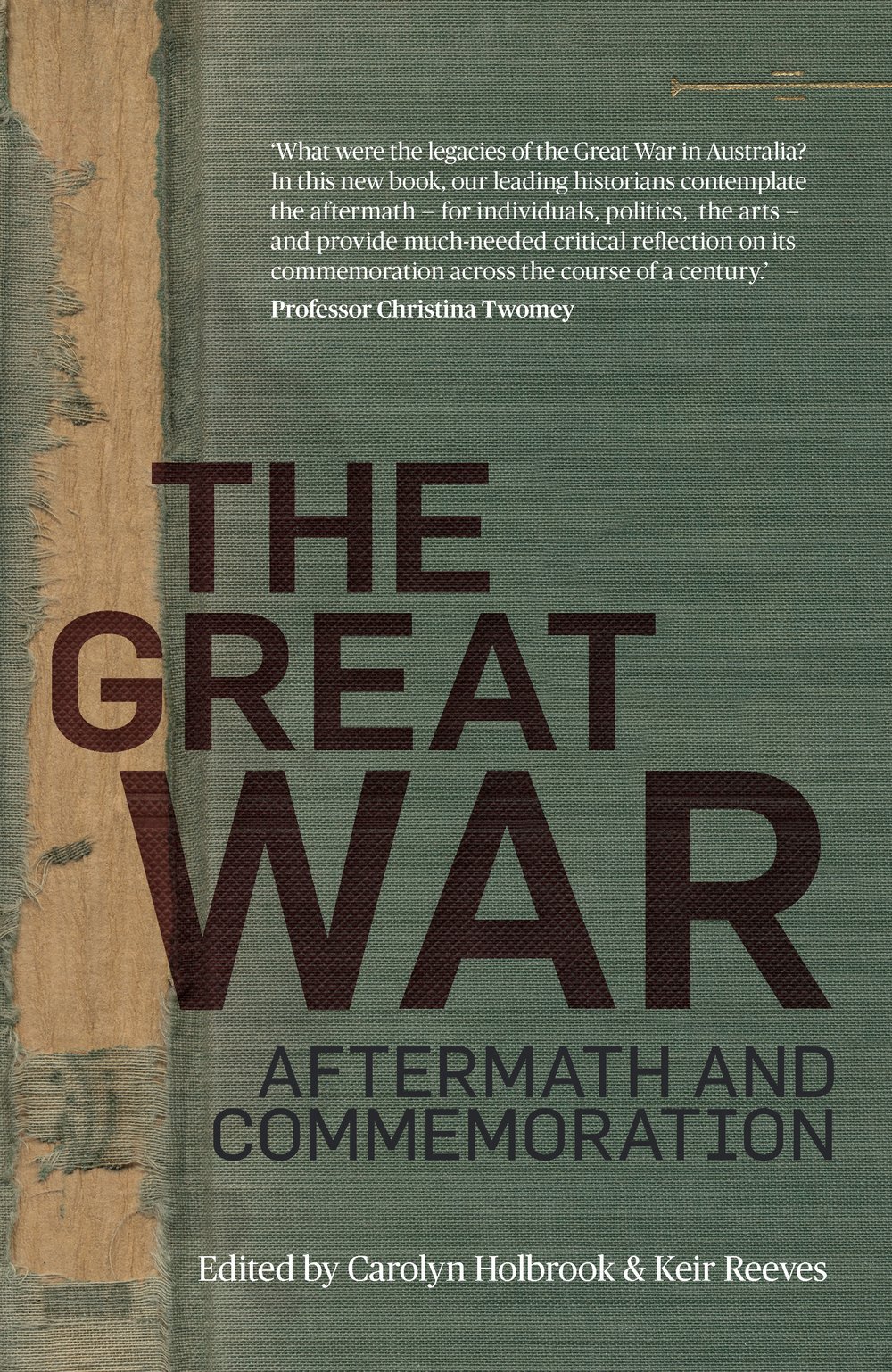Edited extract from Chapter 20: ‘Making Sense of the Great War Centenary’ by Carolyn Holbrook
History shows that Anzac commemoration has always filled an emotional rather than an intellectual function in the Australian psyche. In its original manifestation up until the 1960s, Anzac commemoration was primarily an outlet for mourning and remembrance. It endured a period of apathy and hostility from that decade, because it ceased to fulfil this emotional role. The meaning of the Anzac legend had been transformed during its transmission from the First World War generation to the young men and women who were growing to adulthood in the decades after the Second World War. Where the veterans and their children’s generation saw in the Anzac legend noble sacrifice for nation and empire, their grandchildren saw a bunch of bigoted old blokes stumbling around on Anzac Day, gambling and drinking too much beer. This sacrilegious interpretation of Anzac Day was controversially presented in an editorial in the Sydney University student newspaper Honi Soit in 1958, and more famously by Alan Seymour in his play, The One Day of the Year (1960). Like any mythology, once a new audience failed to find its personal experience and aspirations reflected in the Anzac legend, it lost its potency.
The seeds of the revival of Anzac can be found during the period of its decline, in the growing interest of family historians during the 1970s and 1980s in the experiences of their soldier fathers and grandfathers. A new perspective on the war, far removed from the anachronistic values of the RSL, could also be found in works of history, such as Bill Gammage’s The Broken Years (1974) and Patsy Adam-Smith’s The Anzacs (1978). University student David Graupner’s observation that the Anzac legend would need to change if it were to survive proved prescient. Anzac 2.0 discarded the imperial connotations and emphasis on Australian soldiers’ martial prowess that lay at the heart of the original Anzac legend, for a focus on the personal experiences of ordinary troops. This intimate focus was facilitated by the diaries and letters that were increasingly used by descendants, academic historians and others to understand the experience of the war. Anzac 2.0 valorised inoffensive values such as mateship, suffering and sacrifice. It provided Australians with a mythology around which to craft a distinctive sense of nationhood, following the demise of the British-Australian identity. With its sympathetically crafted main characters, played by Mark Lee and Mel Gibson, and its anti-British sensibility, Peter Weir’s 1981 film Gallipoli remains the most influential representation of the reforged Anzac legend.
The Hawke government discerned this renewed interest among the Australian public in Anzac commemoration when it agreed to fund the seventy-fifth anniversary ‘pilgrimage’ to Gallipoli of a group of elderly veterans in 1990.[i] The success of the trip marked the dawn of the age of political patronage of Anzac, and the tradition of Australian prime ministers travelling to Gallipoli for the Anzac Day dawn service. That tradition was greatly enabled during the prime ministership of John Howard (1996-2007) and has continued under both conservative and Labor governments. Australia spent more than any other nation on commemoration of the centenary of the Great War; Germany outlaid approximately AUD$2 for each soldier and civilian killed during the war; France $52, and the United Kingdom $109, while Australia spent $8889 per soldier and civilian killed.[ii] Despite these extraordinary figures and the desire of political leaders to use Anzac to stoke nationalist sentiment, Anzac remains a grass-roots phenomenon; a mythology that survives and flourishes because the seeds of political patronage fall on fertile ground.
Like all mythologies, whether they are nationally, ethnically, religiously or otherwise based, Anzac commemoration invites emotional rather than intellectual engagement from its adherents. The Anzac religion already has its sacred ‘text’ in Peter Weir’s film Gallipoli. This perennially popular film moulds the basic form of modern Anzac commemoration by masterfully presenting the classic conceit of tragic sacrifice; in this case, the sacrifice of innocent young soldiers to give birth to the Australian nation. In addition to its celluloid scripture, Anzac commemoration has developed an annual ritual of great emotional and aesthetic power; the dawn service. In cities and towns around Australia, at Anzac Cove in Gallipoli, at Villers Bretonneux in Picardy, and in dozens of other places overseas, thousands of Australians commune in the evocative conflation of human sacrifice and national birth.
Those who are dismayed by the ubiquity of Anzac must understand that its power cannot be countered by rational argument, that Anzac commemoration is an experience not an intellectual exercise. In the absence of an alternative national mythology, and in the face of continuing sponsorship by the state on a massive scale – witness the recently approved $498 million expansion of the Australian War Memorial – it is hard to imagine that Anzac commemoration will be supplanted any time soon. Already we have seen it stretch to embrace women, Indigenous Australians, gay and lesbian service men and women, and others of non-Anglo backgrounds.[iii] Perhaps the efforts of sceptics are best devoted to resisting those who strive to impose Anzac on the national imagination to the exclusion of other aspects of Australian history – and, even worse, those who seek to revive its old militarist and racist connotations. After all, an Anzac legend that is steeped in the language of trauma and suffering, and conjures values such as mateship, sacrifice and courage is a relatively benign foundation on which to rest a national identity.
This new edited collection, The Great War: Aftermath and Commemoration, considers the effect of the war on Australian society in the decades that followed. The book examines the enduring appeal of the Anzac legend and ongoing debates about its historical significance. As Australia moves on from the centenary of the Great War its emotional power abides.
[i] C Holbrook, Anzac: The Unauthorised Biography, New South, Sydney, 2010, pp. 173-79.
[ii] D, ‘Why is Australia Spending so much more on the Great War Centenary than any other Country?’, Pearls and Irritations, 20 June 2015, <https://johnmenadue.com/david-stephens-why-is-australia-spending-so-much-more-on-the-great-war-centenary-than-any-other-country/>, viewed online 7 April 2019.
[iii] C Holbrook, ‘Anzac Offers a New Way to Join Team Australia’, Age, 19 April 2016, <https://www.smh.com.au/opinion/anzac-season-turning-war-memory-into-a-nationalist-festival-is-wrong-20160418-go8uhe.html>, viewed online 5 April 2019.
Carolyn Holbrook's and Keir Reeves' edited book The Great War: Aftermath and Commemoration will be published by NewSouth in November 2019.



